Guru Nanak Philosophy and Writings 555 Years later and Beyond . . .
ਪੰਜਾਬ ਵਸਦਾ ਗੁਰਾਂ ਦੇ ਨਾਂ ਤੇ . . .
ਕੋਈ ਲਾਰਿਆਂ ਸਿਰ ਪਿਆ ਰਾਜ ਕਰਦਾ,ਕੋਈ ਹਿੱਕ ਦੇ ਤਾਣ ਲਲਕਾਰਦਾ ਏ
ਸੱਚੀ ਪੁਛੋ ਜੇ ਮਾਣ ਪੰਜਾਬੀਆਂ ਨੂੰ , ਕਹਿੰਦੇ ਸਾਨੂੰ ਤੇ ਉਹ‘ਦੇ ਸਤਿਕਾਰ ਦਾ ਏ !!!
Guru Nanak Philosophy and Writings 555 Years later and Beyond . . .
“Mankind’s religious future may be obscure; yet one thing can be foreseen. The living higher religions are going to influence each other more than ever before in the days of increasing communications

between all parts of the world and branches of human race. In this coming religious debate, the Sikh Religion and its scripture, the Guru Granth, will have something of special value to say to the rest of the world,” says Arnold J. Toynbee. Toynbee is a renowned British historian whose twelve-volume analysis of the rise and fall of civilizations, A study of History, 1934-1961, was a synthesis of world history, a meta history based on universal rhythms of rise, flowering and decline from a global perspective. From Max Arthur Mcauliffe to Miss Pearl S Buck, a famous American writer and novelist almost said similar things. Max Arthur Macauliffe (1841-1913), was a senior Sikh-British administrator, prolific scholar and author renowned for his translation of Sikh scripture and history into English. Pearl S. Buck earned a Pulitzer Prize for her novel The Good Earth. She was also the fourth female to win a Nobel Prize for Literature.
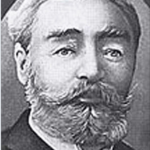

Guru Nanak also called Baba Nanak, founder of the Sikh religion was born in Punjab in 1469 CE. Islam was a dominant religion
and Afghan Lodhis were the ruling class then at Delhi & Punjab. Islam was simple but ruthless. Hinduism was passive, complicated and burdened under caste system, idol worship, superstitions and rituals. Hindus and Hinduism was divided in several sects. Caste system was at its peak. Brahmins- Purohits visited villages telling commoners when and how to pray and please different gods and goddesses. The pitiable condition of masses as prevailed at the time is eloquently explained in a long Urdu poem ‘Nanak’ in his poetry book, Bang-e-Dra (The Call of the Marching Bell) by none other than the renowned philosopher poet laureate and a
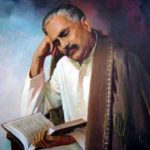
practicing Muslim, Sir Allama Muhammad Iqbal:
ਫਿਰ ਉਠੀ ਆਖ਼ਰ ਸਦਾ ਤੌਹੀਦ ਕੀ ਪੰਜਾਬ ਸੇ
ਹਿੰਦ ਕੋ ਇਕ ਮਰਦ-ਏ -ਕਾਮਿਲ ਨੇ ਜਗਾਇਆ ਖ਼੍ਵਾਬ ਸੇ . . .
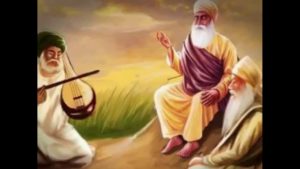
No comparison but times when Martin Luther (1483-1546) a German professor of theology was reforming Christianity by exposing corruption, indulgences and exploitation in the name of religion by the Church and the Pope in Europe, Baba Nanak (1469-1539) was challenging the authority of Brahmin, Mullah and the Islamic rulers in South Asia. In fact the professor was only a teenager when Baba Nanak announcing, “Aad sach, jugad sach, hai bhi sach,Nanak hosi bhi Sach’- and Awal Allah Noor Upaya, Kudrat ke Sabh Bande . . .” had started what someone described as a ‘Rabab to Nagara’ revolution along with his lifelong Muslim companion Mardana.

The other difference was that general public had already woken up under Renaissance in Europe. India 10,000 miles away on the other hand, was fast asleep having nightmares under tyranny, ignorance, divisiveness and confusion. While the university professor addressed the people from the top which resulted in famous Reformation, Guru Nanak raised his voice against injustices, hypocrisy and rituals in religions from the grass root. He also visited all religious places thus known and addressed the difficult situation in such a way that neither it offended Islamic rulers nor the populace. Baba boldly raised social concerns such as improving the status of women in the society and giving equal opportunities to women in all aspects of social, political and economic spheres, whilst stressing tolerance and respect. The irony is Martin Luther and his Reformation Movement got the right place in the history of Europe and the world as it found right place in school books as well as places of higher learning it deserved. Guru Nanak philosophy despite Sikh Religion now one of the five main practicing religions worldwide with 25 million adherents on the other hand, is still kept on the margins due to different reasons, both home and abroad.
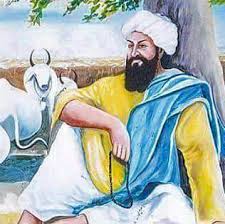
Philosophy:
His words ‘No one is Muslim nor a Hindu but humans at core’ resulted in building bridges. His philosophy was so simple and uncomplicated, it can be described in 3 words: Kirat Karo-work to earn truthfully, Wand Chhako- share with the needy and Naam Japo- Pray to one formless. He settled down at Kartarpur, now in Pakistan and practiced what he imbibed & preached. The followers who visited him became Sikhs meaning learners of faith or Disciples and they in turn called him Baba or Guru, the spiritual teacher. When someone is said to have asked Dhanna, a devout Sikh farmer – bhagat, how difficult is it to meet God? Dhanna at the time was probably transplanting his seedlings from one place in the field to the other. Looking at the questioner he paused a little and said, “Rabb da ki Pauna, Edheron Putna te Odher Launa.” meaning why is it difficult? It is just like ‘lifting from here and planting it over there!
The challenge to understand Guru’s message however, is not only in reading and parroting what he said or wrote but to look between the lines, contemplate and make out your selves what it is all about. He elaborated on his philosophy in his writings called ‘Bani’ the Holy Scripture, which was later, enshrined in the Guru Granth Sahib. Bani also called “GurBani because it was written by the Guru himself is written in poetry form in Punjabi language commonly spoken at that time. Although it is easy to read and memorize after reading a few time, but the Gurmat Boli is not easy to imbibe and contemplate. I tried to explain to myself the difficulty in my own case in a short Punjabi poem asking for Guru’s blessings to help me understand a bit:
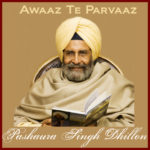 ਮੇਰੇ ਸਾਹਿਬਾ ਮੈਨੂੰ ਤੌਫੀਕ ਇਹ ਦੇਵੀਂ,
ਮੇਰੇ ਸਾਹਿਬਾ ਮੈਨੂੰ ਤੌਫੀਕ ਇਹ ਦੇਵੀਂ,
ਮੈਂ ਤੇਰੀ ਬਾਤ ਸਮਝਾਂ, ਬਾਤ ਵਿਚਲੀ ਰਮਜ਼ ਨੂੰ ਜਾਣਾਂ।
ਤੂੰ ਮੇਰੇ ਤੋਤਲੇ ਬੋਲਾਂ ਦਾ ਰਾਖਾ ਖੁਦ ਬਣੀਂ,
ਬਖਸ਼ ਦੇਵੀਂ ਉਹ ਬੋਲੇ ਬੋਲ ਜੋ ਨਾ ਠੀਕ ਕਹਿ ਪਾਵਾਂ।
ਮੇਰੇ ਇਹਸਾਸ ਨੂੰ ਕਿਰਦਾਰ ਨੂੰ ਉਹ ਨਿਮਰਤਾ ਦੇਵੀਂ,
ਮੈਂ ਤੇਰੇ ਲਾਲੋਆਂ ਦਾ ਥਹੁ-ਪਤਾ ਈ ਭੁੱਲ ਨਾ ਜਾਵਾਂ।
ਸ਼ੁਭ ਕਰਮਨਾਂ ਤੋਂ ਨਾ ਟਰਾਂ ਤੇ ਨਾ ਡਰਾਂ ਅਰਸੋਂ,
ਜਾਬਰ ਦਨਦਨਾਉਂਦੇ ਵੇਖ ਕੇ ਮੈਂ ਦਹਿਲ ਨਾ ਜਾਵਾਂ।
ਕਾਤਲ ਬਾਜ਼ੂਆਂ ਵਿਚ ਦਰਦ ਦਿਲ ਵਿਚ ਖੌਫ ਭਰ ਦੇਵੀਂ,
ਦਰਗਾਹਾਂ ਕਦੇ ਨਾ ਬਨਣ ਦੇਵੀਂ ਫਿਰ ਕਤਲਗਾਹਾਂ।
ਭਲਾ ਸਰਬੱਤ ਦਾ ਮੰਗਾਂ ਤੇ ਇਸ ਦੇ ਨਾਲ ਫਿਰ ,
ਆਪਣੇ ਬੱਚਿਆਂ ਦੀ ਖੂਬਸੂਰਤ ਜ਼ਿੰਦਗੀ ਚਾਹਵਾਂ।
ਫਿਰ ਜੇ ਹੋ ਸਕੇ ਤਾਂ ਧੋ ਦਵੀਂ ਲੱਗੀ ਓਹ ਹਰ ਤੋਹਮਤ,
ਤੇਰੇ ਦਰਬਾਰ ਆਖਰਕਾਰ ਜਦ ਮੈਂ ਸੱਦਿਆ ਆਵਾਂ।
Baba Nanak was the first of ten human Gurus responsible for the creation of Sikh faith which took place over the period from 1469 to 1708. At the point when the 10th human Guru departed this Earth, the Guru ship was passed to eternal Guru Granth Sahib. The Sikhs treat the Guru Granth as a living Guru showing respect in the Holy Scripture or the ‘Shabad’ therein, in a unique way. Like Judaism and Islam, Sikhism is a revealed faith and a pure monotheism with a difference; at the end of the Sikh Ardas (prayer), which in general is about one’s personal and intimate relationship with almighty, Guru Nanak went beyond that to include everyone in the world. Sikhs pray not just to merge with God, but that everyone in the world be blessed to experience this. “ Nanak naam chardi Kala tere Bhane sarbat da bhala,” roughly translates: Oh, Nanak! Those who know their True Identity live in excellence and ecstasy! Through the power of your Bani, may everyone in the world be blessed to live in this way?”

‘No One has a Clue debate’:
Human development is complex and has come a long way. During this journey, human beings developed a most critical and comprehensive thought process called philosophy, which is different from religion. Where philosophy is both critical and comprehensive; religion is comprehensive, not necessarily critical. Making it more complicated to understand, science and spirituality also came in to this. “Things those scientists haven’t yet described or explained fall into the realm of the unknown. Spirituality, religion and philosophy are considered as tools that help us understand the unknown. They take us places where science can’t go,” says educationist David Blomstrom. Having said this, he questions to himself, “So did philosophy evolve after science? Or is it more correct to say they evolved together? Or could philosophy even predate science?” If the answer is “no one has a clue,” that would be helpful, “concludes David Blomstrom. Scholarly debate on the subject aside, a common man simply knows it as a religion. According to Wikipedia there are over 6.2 billion people on the planet earth in this millennium. Most of them would declare that they are religious in some way.

Mantra for Mankind’s Survival:
Going back to Guru Nanak philosophy, it would be appropriate to conclude the post with quotes from Jap ji Sahib, which is the essence of his philosophy called Bani. Jap Ji being the first Bani in Nitnem, not only forms the foundation of the Sikh faith, it is virtually a Mantra for Mankind’s Survival also. Jap Ji consists of the Mool Mantar, an opening Salok, a set of 38 Pauris (hymns) and a final Salok. To prove Toynbee on his money as mentioned above, take the final Slok for instance and see it for yourselves how it relates to Toynbee’s prediction. Slok “pavan guru paanee pitaa maataa Dharat mahat …” is pretty self-explanatory, which means, “Air the Guru; Water, the Father; and Earth, the Great mother. . .” the fact, Guru Nanak reminded us more than 500 years ago!
Today five hundred and fifty five years later same message is being echoed by such modern day thinkers ranging from Eckhart Tolle in “The Power of Now,” to a Swedish school going girl *Greta Thunberg. Young Greta being nominated for Nobel Prize 2019.

No wonder ‘Climate Change’ is now a “Call of the Marching Bell” so to speak, for the whole mankind’s survival in the 21st century. After all, Jap Ji begins with the line “Ek- ong- kar”, meaning the creator and the creation is one!
In conclusion congratulations on the 555th Prakash Utsav Celebrations and Best wishes especially for those instrumental for opening of Kartarpur Sahib corridor. Kartarpur corridor with the blessings of Baba Nanak has the potential of endless opportunities going all the way through to restoring the worthy reputation of Khaibar Pass used as an historic trade route for the world as opposed to which invited invaders and marauders. Choice is with us. Time will tell!

One can only hope and pray that the whole Sikh nation, home and abroad will come together to celebrate this historic moment in time, matching enthusiasm beyond Golden Palkis, pompous Nagar Kirtans, rival party-pandaals and dangerous blame games with innovative academic work. “While there was no golden ‘palki (resting place for Guru Granth Sahib)’ at Darbar Sahib, we were ferrying one to Nankana Sahib,” said Dr. Mohinder Singh of National Institute of Panjab Studies, noting that rare books on Guru Gobind Singh’s era were missing and there is no money for Guru Nanak studies in universities.” – TNS
Reference:
* Born 3 January 2003, Greta Tintin Eleonora Ernman Thunberg is a Swedish activist who, at age 15, began protesting outside the Swedish parliament in August 2018 about the need for immediate action to combat climate change. On September 13, 2019, she spoke at a climate protest outside the White House in Washington, DC. She launched a school strike that inspired millions to join her “Fridays for Future” Movement. Experts being cautious, the bookies were tipping the 16 year old climate campaigner young Greta for the Nobel Peace Prize year 2019!
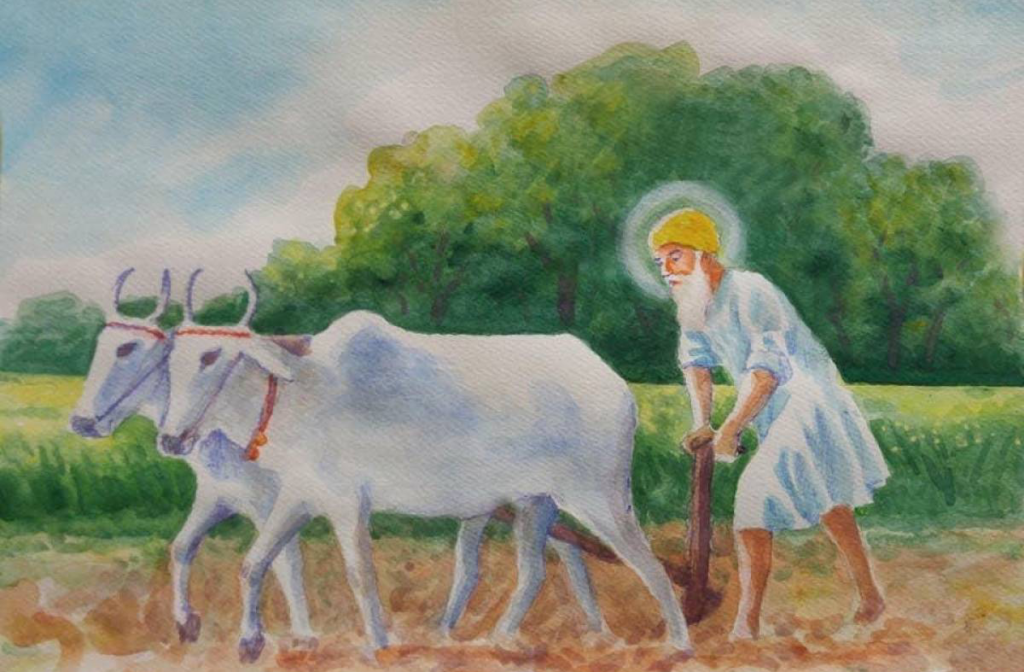
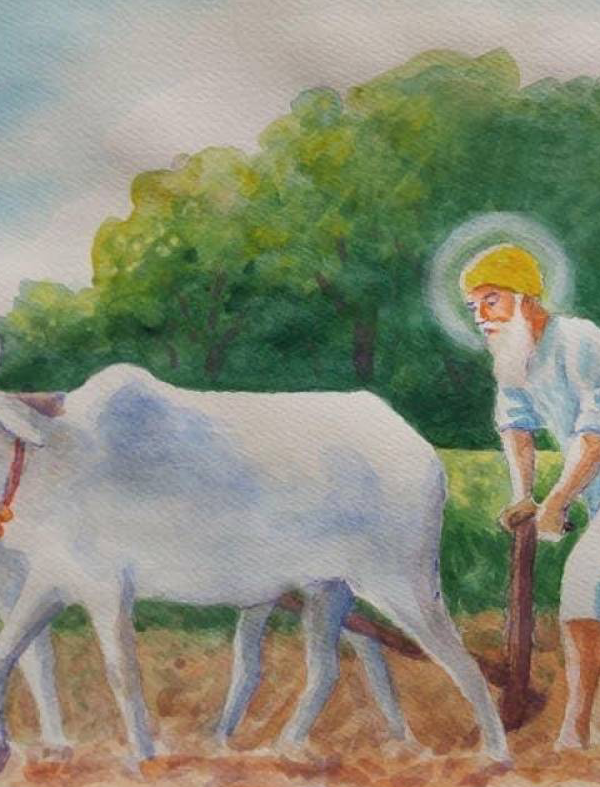



Leave a Reply